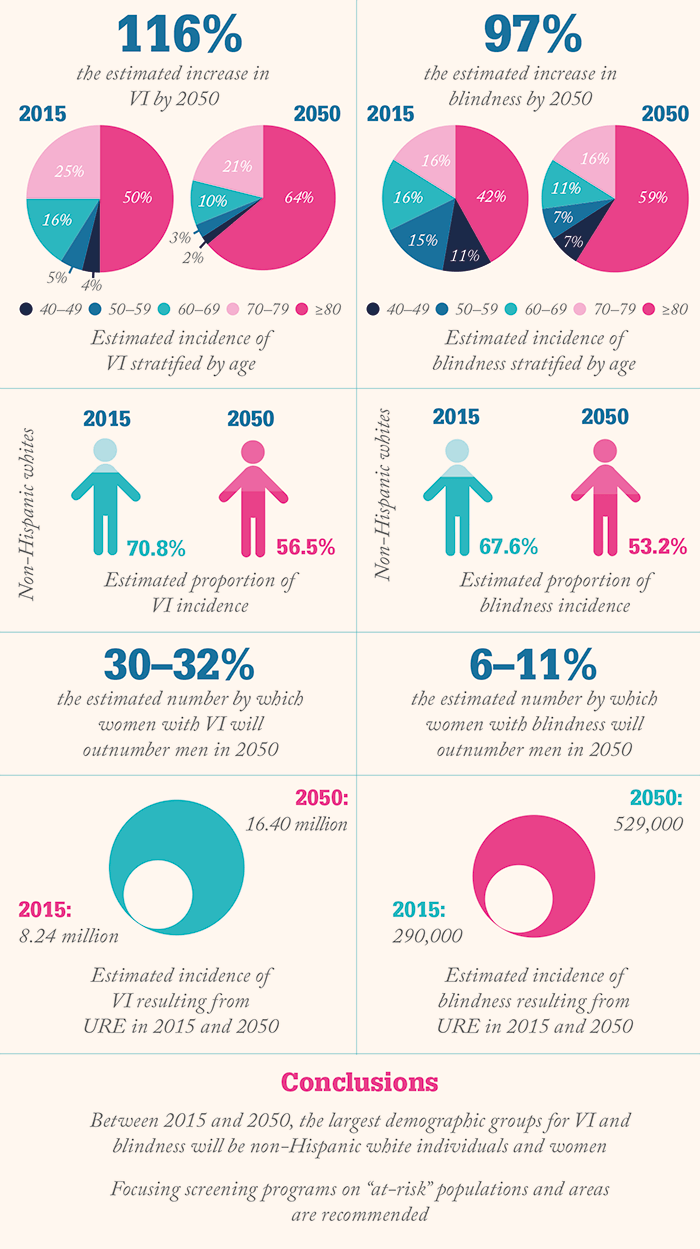
The year is 2050, and surviving baby boomers – born between the post-war years 1946 and 1964 – are now 86–104 years old. Has this aging population delivered the anticipated “demographic timebomb”? We summarize key results from a recent study forecasting the prevalence of visual impairment (VI) and blindness in the US up to 2050 (1).
- Estimated incidences of VI and blindness will increase, as will the proportion of patients aged 80 years or more.
- Women with VI and blindness will continue to outnumber men.
- Non-Hispanic whites are estimated to remain the largest ethnic population with VI and blindness.
- The second-largest ethnic population with VI will switch from African-Americans to Hispanic/Latino individuals, who are predicted to be the fastest growing US minority group.
- Florida and Mississippi will continue to be the states with the highest per capita prevalence of VI and blindness, respectively.
- The incidences of VI and blindness as a result of uncorrected refractive error (URE) are expected to rise, with incidences of VI almost doubling.
References
- R Varma et al., “Visual impairment and blindness in adults in the United States: demographic and geographic variations from 2015 and 2050”, JAMA Ophthalmol. [Epub ahead of print]. PMID: 27197072.
